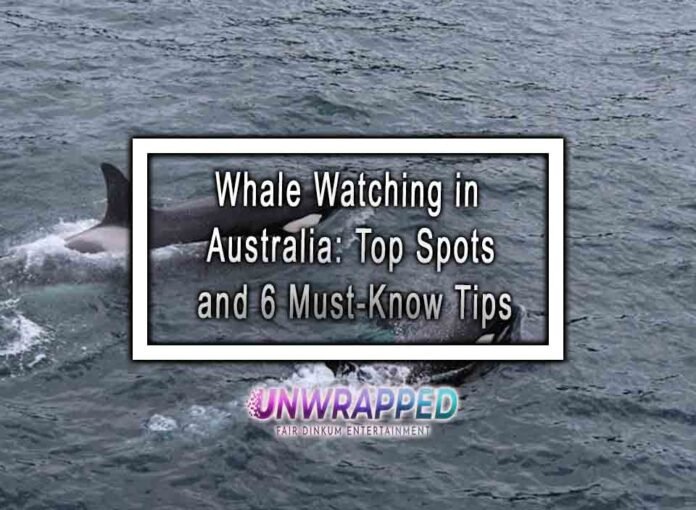1. Why Whale Watching Should Be on Your Bucket List
Whales, the gentle giants of the ocean, are the largest living creatures on Earth. Despite their massive size, these mammals are calm and fascinating, making whale watching a serene yet exhilarating experience. Observing whales in their natural habitat provides a unique opportunity to appreciate their majestic beauty and vital role in the marine ecosystem. As they gracefully glide through the water, playful yet intelligent, it’s hard not to be mesmerized by their charm. And who knows—while you’re watching them, perhaps they’re watching you too!
2. What Is Whale Watching?
Whale watching is the act of observing whales in their natural habitat, often from boats or coastal vantage points. This activity blends recreation, education, and conservation, offering a window into the lives of these extraordinary marine mammals. Australia stands out as one of the world’s premier destinations for whale watching, thanks to its extensive coastline and diverse whale species.
3. Why Australia is Perfect for Whale Watching
Australia’s pristine coastlines and government-backed conservation initiatives make it a hotspot for whale watching. Tourists can enjoy observing whales while adhering to strict guidelines designed to protect these creatures. Boats and viewers must maintain a distance of 300 to 500 meters, ensuring minimal disturbance to the whales’ natural behavior.
4. A Rich History of Whale Watching in Australia
Whale watching has evolved significantly since its early days. Starting in the mid-18th century, when European settlers first arrived, whaling was initially a commercial activity. However, with the establishment of the Australian Whale Sanctuary in 1999, the focus shifted to conservation. This sanctuary helped curb poaching, turning whale watching into a thriving tourism industry that continues to grow in popularity.
5. Top Whale Watching Destinations in Australia
Australia’s extensive coastline offers numerous vantage points for whale watching. Here are some of the best spots:
Western Australia:
- Cape Naturaliste and Cape Leeuwin: These iconic locations near Perth are perfect for spotting humpback whales and southern right whales.
- Broome: A great location for whale watching during the migration season.
Southern Australia:
- Great Australian Bight: Enjoy panoramic views from the cliffs while watching whales frolic in the waters below.
- Victor Harbor and Encounter Bay: Encounter Bay attracts hundreds of thousands of visitors each season, offering some of the best whale-watching opportunities.
Eastern Australia:
- Sydney Harbour and Botany Bay: Easily accessible locations that provide fantastic sightings of migrating whales.
- Byron Bay: Famous for spotting Migaloo, the rare albino humpback whale.
- Sunshine Coast: A prime destination for watching humpback whales during their migration.
Tasmania and Victoria:
- East Coast of Tasmania: A great place to see whales close to shore.
- Warrnambool: Known for its Southern Right Whale nursery.
Best Time for Whale Watching in Australia
The peak whale-watching season varies by region but generally spans May to November. In Victoria, the season extends from November to May. Plan your visit accordingly to catch these magnificent creatures during their migration or calving periods.
Fascinating Facts About Whale Watching in Australia
- Whale watching in Australia generated AUD 31 million in 2008, attracting 1.6 million tourists.
- Humpback, blue, southern right, and minke whales are commonly spotted species.
- Migaloo, the famous albino whale, was first seen off Byron Bay in 1991 and continues to captivate visitors.
- Encounter Bay alone draws about 400,000 visitors during peak whale-watching season.
How to Make the Most of Your Whale Watching Experience
- Choose the Right Time: Research the best season and specific species you’re interested in.
- Pick a Reputable Tour Operator: Select operators committed to ethical whale watching and conservation.
- Bring the Right Gear: Binoculars, cameras, and sunscreen are essential for a comfortable and rewarding trip.
- Be Patient and Respectful: Whales are wild animals, so sightings can vary. Maintain a respectful distance to avoid disturbing them.
6. Contributing to Conservation
Whale watching not only provides a thrilling experience but also supports marine conservation efforts. By participating, you contribute to the awareness and protection of these gentle giants. Share your whale-watching stories and photos to inspire others and promote sustainable tourism.
See: Top 10 whale-watching spots in Australia – Australian Geographic
Conclusion
Whale watching in Australia is more than a bucket list activity; it’s an awe-inspiring journey into the heart of marine life. With numerous destinations, diverse species, and a strong focus on conservation, Australia offers unparalleled opportunities to witness these majestic creatures. Whether you’re a seasoned traveler or a nature enthusiast, this experience will leave an indelible mark on your soul.
Also See: 10 Most Beautiful Australian Islands for a Perfect Holiday










